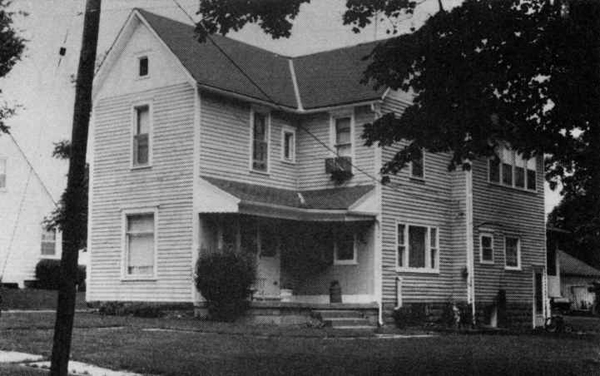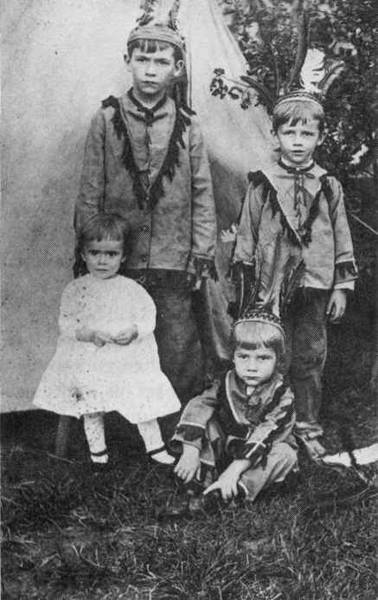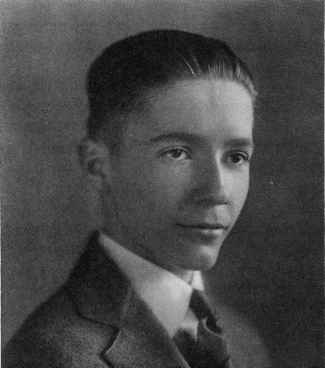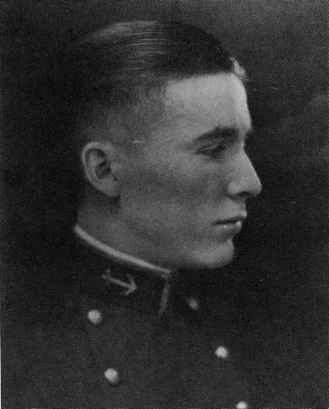Grumbles from the Grave (2 page)
Read Grumbles from the Grave Online
Authors: Robert A. Heinlein,Virginia Heinlein
Tags: #Authors; American - 20th century - Correspondence, #Correspondence, #Literary Collections, #Letters, #Heinlein; Robert A - Correspondence, #Science Fiction & Fantasy, #20th century, #Authors; American, #General, #Language Arts & Disciplines, #Science Fiction, #American, #Literary Criticism, #Science fiction - Authorship, #Biography & Autobiography, #Authorship

The closest Heinlein comes to portraying a total naïf and objectifier of women is John Lyle in
Revolt in 2100,
a collection of interconnected novellas first published in
Astounding.
These were the stories that made Heinlein’s name. Yet even though quixotic, unrealistic romantic passion triggers Lyle’s revolt against his fundamentalist masters, as he comes to maturity in the trenches such notions give way to longing for a lasting relationship with a battle-tested soul mate who is as strong-willed and individualistic as he is.
In company with Heinlein’s political critics, the gender critics always seem to make the categorical mistake of taking this or that character’s pronouncement
inside
a Heinlein tale for Heinlein’s own attitude. It’s all nonsense. One look at Heinlein’s relationship with his wife Virginia in
Grumbles from the Grave
and
Tramp Royale,
and it becomes obvious that Heinlein’s career was a joint venture and a shared journey with someone he considered just as smart and driven as himself−and most definitely somebody he knew from experience was a better linguist, mathematician and life-organizer.
As Damon Knight describes her in his introduction to Heinlein’s
The Past Through Tomorrow,
Virginia Heinlein “is a chemist, biochemist, aviation test engineer, experimental horticulturalist; she earned varsity letters at N.Y.U. in swimming, diving, basketball and field hockey, and became a competitive figure skater after graduation; she speaks seven languages so far, and is starting on an eighth.”
There
is
one book in which Virginia and Heinlein himself are the main characters, and that is his travelogue of a year spent traveling around the world,
Tramp Royale.
One begins the book expecting to enjoy a few wacky and now retro descriptions of foreign locales and some ironic nostalgia for the past. What one receives instead is wave after wave of
frission
of recognition. Apart from the prices, the world hasn’t changed much. And after encountering a few of Heinlein’s excellent recreation of conversations with foreigners and his observations of them, it all becomes eerily familiar. The anti-Americanism he encounters is ludicrous and based upon as much ignorance as it is today.
In one telling passage, Heinlein describes how he spent a great deal of time explaining that Senator Joseph McCarthy, then in the news, was not about to take over the reins of power in America and start a nuclear war with Russia. Neither was America spinning into totalitarianism anytime soon. And since none of this was true, why wasn’t McCarthy taken out by the government and shot? Heinlein, who had been fairly left-leaning in his younger days and had campaigned for Sinclair Lewis’s run for the governorship of California, was as annoyed at McCarthy’s idiocy as anyone, but knew he was in no danger from it.
“I am not a constituent or admirer of the senator, but I found myself repeatedly in the odd position of trying to explain what he was doing, why it was legal in a free country for him to do it, and how it was impossible in a free country for a congressional investigation to cause a ‘reign of terror’ in 160,000,000 people…In the communist half of the world a man such as McCarthy would
really
have power. He would be a ‘people’s judge’ and his victims would never live to complain.”
Heinlein’s own observation of the vast array of countries he and Virginia visited is exquisite. This is travel writing at its best, and was years ahead of its time in judgment and outlook. As with many things Heinlein, this is one that has come back around into fashion and seems utterly contemporary. Furthermore, Heinlein’s advice on travel etiquette is timeless and useful and, at times, highly amusing.
Finally,
Grumbles from the Grave
is a kind of writer’s autobiography in letters. Collected and edited by Virginia Heinlein after Heinlein’s death, these are largely Heinlein’s letters first to John W. Campbell and then to his agent and long-time friend, Lurton Blassingame. If you were ever searching for the lost book Heinlein ought to have produced on the art of writing, you’ll find it here. Wonderful discussions of methods, overcoming blocks, writing on spec and to order can be found throughout, as well as expert (and still pertinent) commentary on the business of writing.
The letters also make for a most excellent “director’s commentary” while reading the stories and novels, and will provide insights and provoke second and third readings to find the good stuff that you may have missed the first go round.
So what follows in this collection is a passage through the Golden Age of science fiction that is, not coincidentally, the First Golden Age of Robert A. Heinlein. If it wasn’t for the juveniles and adult novels where Heinlein first laid down the themes and methods that defined a Heinlein tale, the mighty philosophical fiction triumvirate of
Starship Troopers
,
Stranger in a Strange Land
and
The Moon is a Harsh Mistress
might well have become lost in the ether. Furthermore, an American literary masterwork,
Have Space Suit−Will Travel
, would never have existed at all.
For Heinlein's Children
FOREWORD
This book does not contain the polished prose one normally associates with the Heinlein stories and articles of later years. It has been taken from the day-to-day correspondence between the author and his agent, and from letters from several others, many of which have been excerpted.
Such cutting eliminates a great deal of tedious back-and-forth correspondence concerning details of contracts, discussions about royalty rates, and other items which would hold up the flow of information about the writing business (and other things). This book has been abstracted from enormous files, which run millions of words long, much of it boring to those not concerned with the daily business of writing and selling.
Many people have asked me to consider writing Robert's biography, or a joint one—his and mine—but I am not ready to do that yet. Perhaps, one day.
Meanwhile, this correspondence covers mostly the years from the time when Robert first began writing until the period 1969-1970, at which time he found that his writing time was effectively cut down to zero by the continuing details of his business and subsequently, grave illness . . . Over the years, I had taken over record keeping, information on sales, taxes, and some of the correspondence. In 1970, Robert was very sick for the entire year, and it was then essential that I keep the business running. It was fortunate that I had begun doing so the previous year.
In order to follow the various subjects, I have excerpted these letters to put together as many as possible of the remarks and ideas on those subjects. Each letter did have a number of topics in it, these have been separated where possible. Some of the topics are: juveniles, adult novels, publishers, travel, fan mail, time wasters, Robert's writing methods, and so forth.
Some names have been left out for legal reasons.
There are places where there are only notes on telephone conversations. It would be impossible to reconstruct those. They have been omitted.
There are a few sparse excerpts from letters which were written after I took over running the business end of Robert's writing . . . most of those letters written by Robert. He talked to Lurton Blassingame, his agent, now and then, but mostly he spent his time reading for his work, or writing. During the last eighteen years of his life, he had many illnesses. But, in between, he continued working.
I was his "first reader"—the person who read each work first and made suggestions for cutting, revisions, and so on. It was a great responsibility. When Robert came down with peritonitis in 1970,
I Will Fear No Evil
needed more cutting, but it was obvious that he was (and would be for a long time) in no condition to do that. And his publisher was calling for the manuscript, so I had it Xeroxed and sent it in. I take full responsibility for that. With further cutting, it might perhaps have been a better story. In spite of this, it has sold more than a million copies in U.S. paperback alone, and has been translated into more than half-a-dozen languages, and is still in print in all of those, including English.
At one time, Robert wrote to his agent about the possibility of writing a memoir-autobiography:
Grumbles From The Grave
by Robert A. Heinlein (deceased).
This is that book. It covers many years, many subjects, and some personal comments—taken mostly from letters between Robert and his agent, Lurton Blassingame.
Virginia Heinlein
Carmel, California 1988
A SHORT BIOGRAPHY OF ROBERT A. HEINLEIN BY VIRGINIA HEINLEIN
Robert Anson Heinlein was born July 7, 1907, the third of seven children of Bam Lyle Heinlein and Rex Ivar Heinlein, in Butler, Missouri. The growing family moved to Kansas City during his childhood.

(xvii)
Heinlein's birthplace in Butler, Missouri.

(xvii)
Robert A. Heinlein (lower right) with his sister Louise (lower left) and his brothers Lawrence Lyle (upper left) and Rex Ivar (upper right).
When Robert learned to read, he read everything he could lay his hands on. He did, in fact, read on his way to school, going along the street, up and down curbs, up to the schoolhouse. He attended junior high school, Central High School in Kansas City, and spent one year at a local junior college. His next older brother had gone before him to the United States Naval Academy, and Robert set his sights on going there. He collected many letters of recommendation from people and gained the appointment from Senator James Reed to enter the Naval Academy in 1925.

(xiii)
Heinlein at the time of his high school graduation.

(xiii)
Robert A. Heinlein, 1929.
Following his graduation and commissioning in 1929, he served aboard the
Lexington
under Captain E. J. King, who later became Commander in chief of the U. S. Navy during World War II. When his tour of duty on the
Lexington
was about to end, Captain King asked that he be retained as a gunnery specialist. However, Robert was given duty as gunnery officer on the
Roper
, a destroyer. Destroyer duty was difficult because of the rolling of the ship, and seasickness was a way of life for him. He lost weight and came down with tuberculosis. After he was cured, the Navy retired him from active duty.
